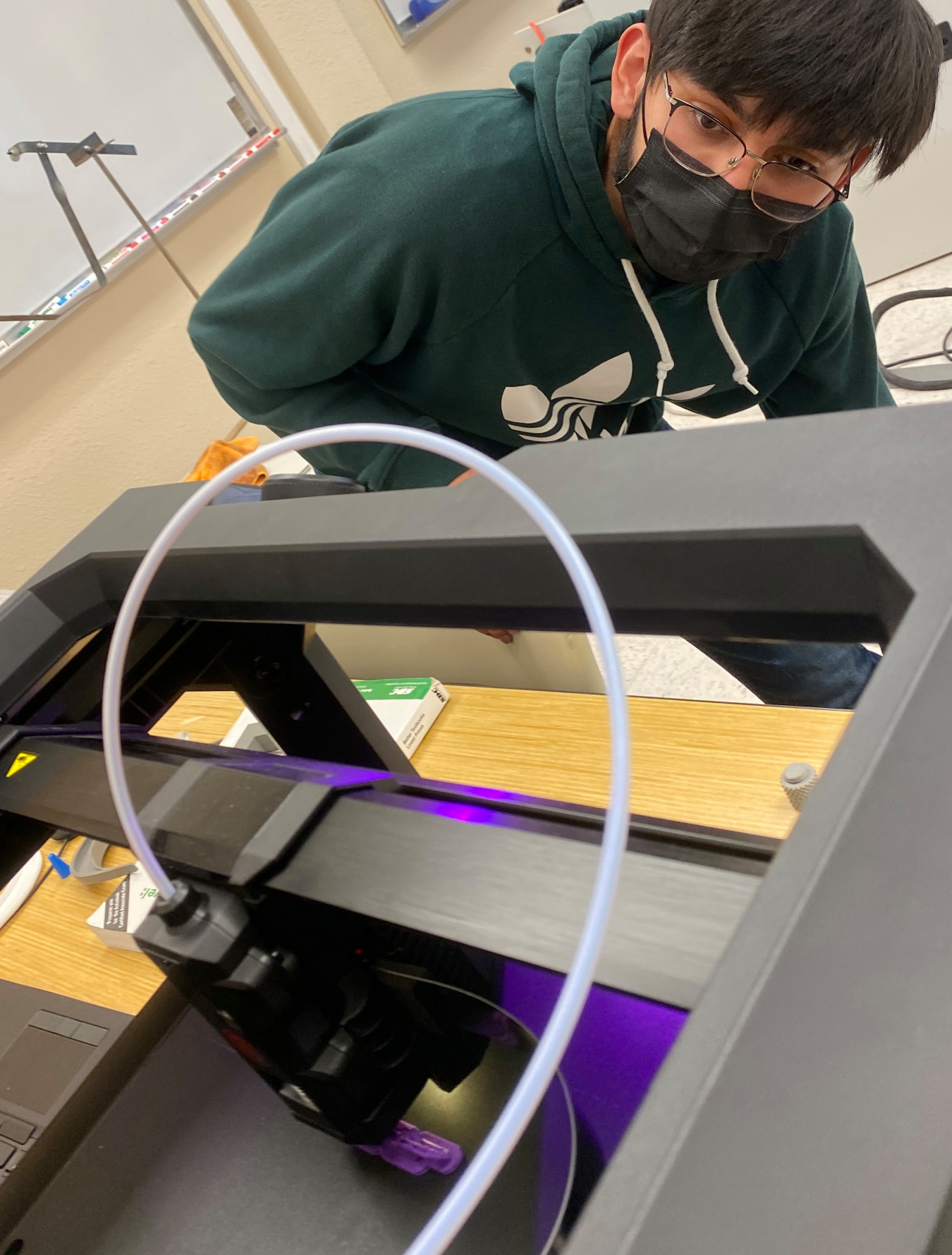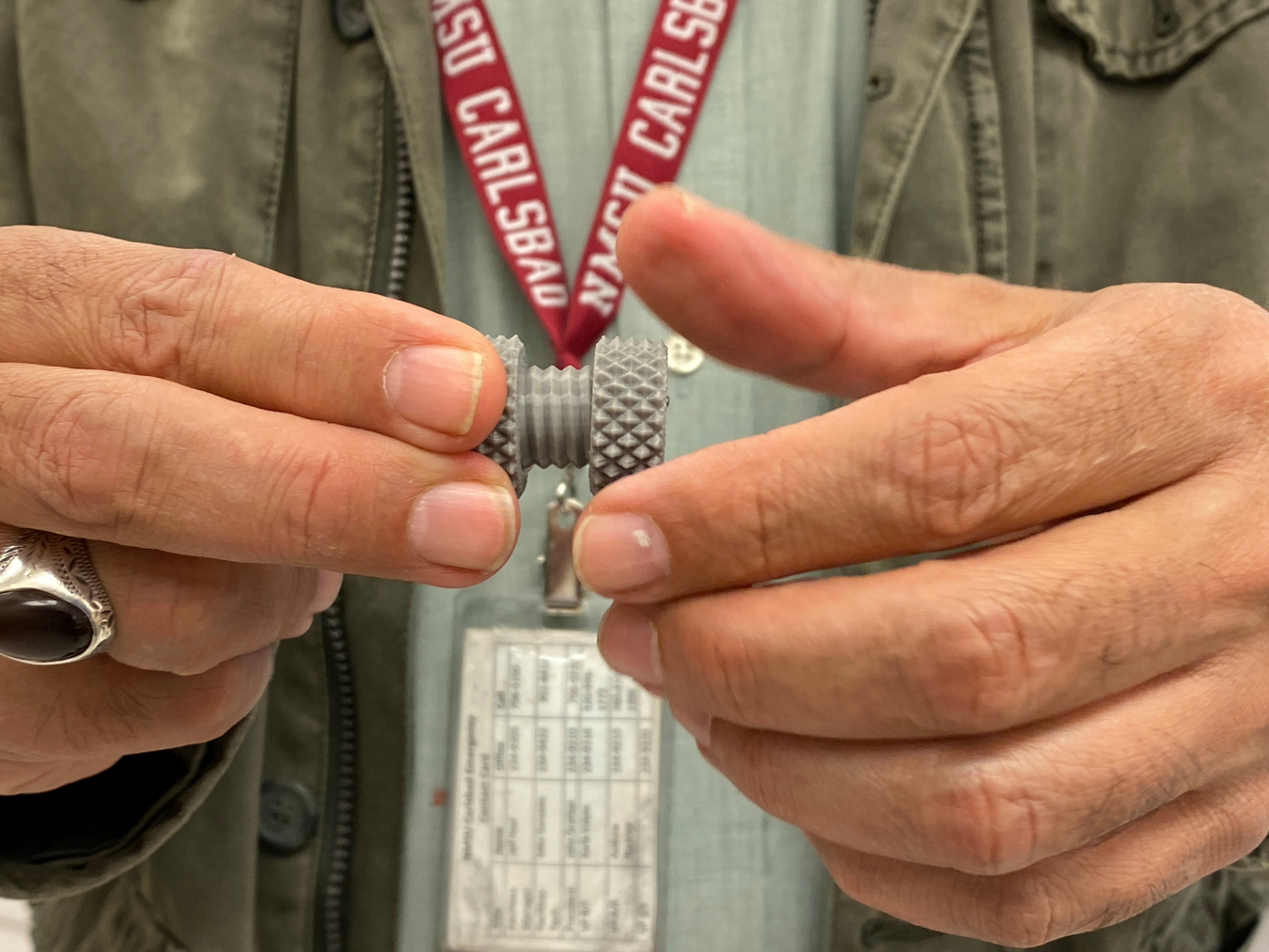A donation by the EM Waste Isolation Pilot Plant’s primary contractor is helping students at New Mexico State University’s Carlsbad campus prepare for an intriguing future in the technology and manufacturing sectors.
Office of Environmental Management
April 6, 2021
CARLSBAD, N.M. – A donation by the EM Waste Isolation Pilot Plant’s primary contractor is helping students at New Mexico State University’s Carlsbad campus prepare for an intriguing future in the technology and manufacturing sectors.
Nuclear Waste Partnership (NWP) donated a 3D printer, an evolving technology that started as a way to make a prototype of a computerized design but has evolved into a technology that can produce stronger, lighter, customizable products in multiple fields.
Moises Trevino, a first-year engineering student at the university, said he has been able to use the 3D printer to experiment with printing parts for face shields and other products to learn about the manufacturing process.
The technology behind 3D printing was invented in the 1980s, started to mature around 10 years ago, and continues today as companies and individuals dream up new ways of putting it to use.

Engineering Professor Jamil Al-Nouman demonstrates a nut-and-bolt assembly printed on New Mexico State University Carlsbad’s 3D printer. The components are printed as one unit, demonstrating the capabilities behind the technology. The college is using 3D printing as an additional training tool to prepare students for upcoming opportunities in the technology and manufacturing sectors.
According to Trevino, who is also a student assistant in a university laboratory, the ability to print out a prototype allows students to experiment and determine issues such as stress points and how to strengthen them, resulting in a better overall product.
Trevino noted the process saves time and money before a product moves to full-scale manufacturing. The design of an object is created using software and transferred to a 3D printer. The printer creates a 3D product by adding layer upon layer of material until the final product is shaped. That is why 3D printing also is known as additive manufacturing, versus traditional subtractive manufacturing where a part is machined from a larger piece of material.
The 3D printing is actually a catch-all term that covers a group of additive manufacturing technologies and processes. There are 10 different methods of printing that are used depending on the product needed.
Modern technology allows 3D printing to be used to print everything from organs, such as scaffolds for lungs and hands; car parts; aerospace parts; and even homes can be printed in about 24 hours.
Materials for different products can range from plastic to fiberglass, powders, filaments, and concrete. An added advantage of this method is that some processes allow for products to be recycled.
To receive the latest news and updates about the Office of Environmental Management, submit your e-mail address.

